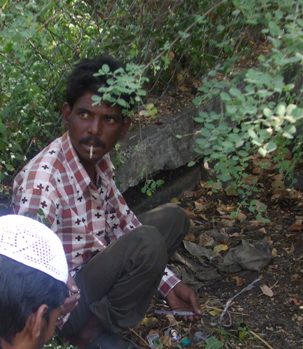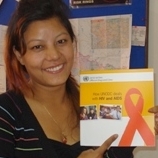Prevention of HIV and AIDS
Nature and Scope
 |
sa |
Between 2 to 3.5 million people in South Asia are living with HIV and AIDS. High risk practices, such as injecting drug use and sex work, drive the epidemic in the region. HIV prevalence among vulnerable and marginalized groups is increasing in some places. In India approximately 2.5 million people are estimated to be living with HIV and AIDS. South Asia's most severe epidemics occur in parts of India, particularly in a cluster of southern and western states. Epidemics also occur in some of the northeastern states where injecting drug use is a major driver of transmission. In parts of Nepal, HIV transmission occurs largely through sex work and injecting drug use and among their partners. Both Bangladesh and Pakistan face growing epidemics, particularly among injecting drug users (IDUs), but HIV rates remain relatively low among sex workers in these countries.
|
HIV prevalence in Sri Lanka remains low, although there are reports that suggest a rise in the reported cases of injecting drug use. Bhutan and the Maldives have limited data, but the available reports suggest that they still have low-prevalence epidemics. Given the enormous scale and heterogeneity of the HIV epidemic in South Asia, Governments and their programme implementing partners are jointly working to develop a comprehensive information database to identify the priority constituents and locations for focused prevention programmes.
HIV prevention programmes for vulnerable populations in South Asia have worked to a large extent. Results have been achieved through targeted interventions aimed at reducing risk behaviors and exposure.
UNODC's response to HIV and AIDS in South Asia
|
|
sp |
UNODC is committed to support member countries in developing comprehensive and sustainable national AIDS programmes. It is a co-sponsor of the Joint United Nations Programme on HIV/AIDS (UNAIDS) and is the lead UN agency for HIV and AIDS prevention and care among injecting drug users and in prison settings. With the government and through civil society organizations, UNODC implements interventions to prevent HIV infection and provides access to care and support to people living with AIDS. It also helps in addressing the prevention of HIV and AIDS associated with human trafficking. |
Through the joint United Nations (UNAIDS, UNODC and WHO) regional initiative on 'Prevention of transmission of HIV among drug users in SAARC countries', UNODC is currently implementing HIV and AIDS prevention and care programmes for IDUs in 58 intervention sites, for young people and especially for women who are drug users, for incarcerated populations and potential or actual victims of human trafficking who are also among the most vulnerable groups within UNODC's mandate.
It has adopted a comprehensive package approach which includes a wide variety of measures, ranging from drug dependence treatment, including drug substitution treatment, outreach providing injecting drug users with information on risk reduction and referral to services, clean needles and syringes, condoms, voluntary counseling and testing, treatment of sexually transmitted infections, antiretroviral therapy and interventions for especially at-risk populations such as prisoners and sex workers who inject drugs. Such a comprehensive package of services stresses on treatment instead of punishment for persons convicted of minor offences, as drug treatment should include humane, rights-based and cost effective alternatives.
The current ongoing technical cooperation projects on HIV prevention, treatment and care supported by UNODC in South Asia include:
- Prevention of spread of HIV amongst vulnerable groups in South Asia
- Prevention of transmission of HIV among drug users in SAARC countries
- Empowering communities for prevention of drugs and HIV in India
- Technical assistance for a coordinated response to prevent HIV among injecting drug users and in prison settings in Nepal: advocacy, capacity building and monitoring and evaluation
- HIV Prevention, care and treatment for female injecting drug users, female prisoners and women living with HIV and AIDS in Nepal
- Joint UN (Prevention of HIV and AIDS project in four North Eastern states of India
To halt and reverse the HIV epidemic, the UNODC Regional Office for South Asia is currently implementing HIV and AIDS prevention and care programmes for IDUs in 58 intervention sites, young people, women drug users, incarcerated populations and potential/actual victims of human trafficking who are also among the most vulnerable groups within UNODC's mandate.
Click here to learn more on the UNODC supported tools and publications on prevention of HIV and AIDS
For more details, connect with us on:
Bangladesh: Mr. Abu Taher, md.taher[at[un.org | Mr. A B M Ziaul Kabir, a.kabir1[at]un.org
Bhutan: Ms. Tandin Wangmo, tandin.wangmo[at]un.org
India/Regional: Ms. Seema Arya, seema.arya[at]un.org
Maldives: Mr. Enrico Bonisegna, enrico.bonisegna[at]un.org
Nepal: Ms. Reena Pathak, reena.pathak[at]un.org
Sri Lanka: Ms. Anusha Munasinghe, anusha.munasinghe[at]un.org
Communications/Partnerships: Mr. Samarth Pathak, samarth.pathak[at]un.org
